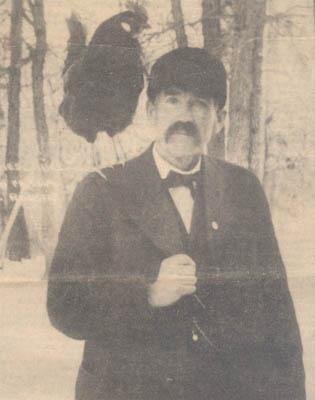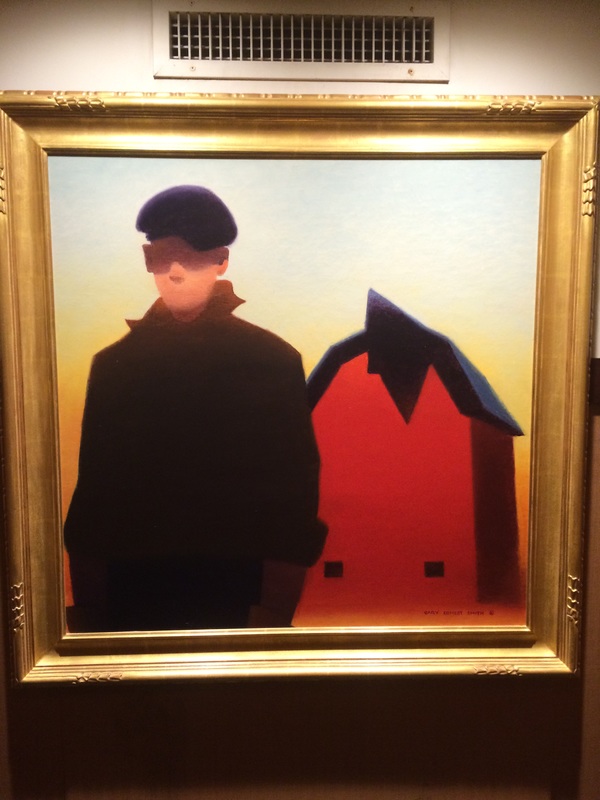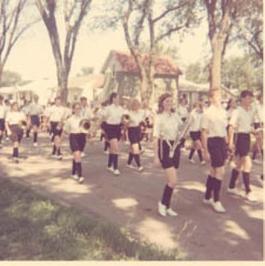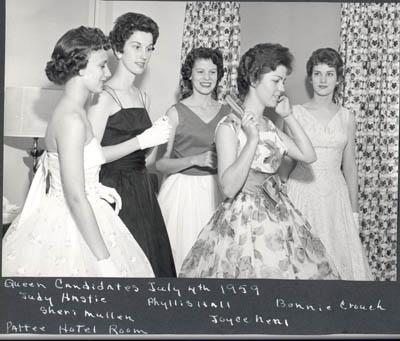|
Good afternoon Readers!
Summer is in full swing, and July 4th is quickly approaching. Because of this, I thought that today we would look at what the holiday was like in Perry in years past! For instance, the parade seems like it used to be much more ornate than what we have now. As you may know, now the parade is mostly a collection of floats, with a people walking around handing out candy to the kids. However, did you know that the Perry High School Marching Band used to participate in the parade? As you can see in the picture, the parade in 1969 included the old Perry High Band. This is quite a bit different then what it is like today. For starters, the uniforms are a lot different: simple black and white instead of the more elaborate blue and white uniforms of today. In addition, the band does not march in the parade anymore. As far as I know, they do not even start practicing until for marching band until August! Going back another ten years, we discover another event that is missing from today’s 4th of July celebrations. In the second picture, you can see a group of girls who are in a room in the Hotel Pattee. These girls are the candidates, according to our records, for a 4th of July queen! It seems that the residents of Perry used to vote for a queen for the 4th and, I am assuming, a king as well. The girls in this photo are, starting from the left, Judy Hastie, Sheri Mullen, Phyllis Hall, Joyce Neal, and Bonnie Crouch. This fun tradition does not seem to be active anymore, and it makes me wonder why. Did the people of Perry simply stop choosing candidates? Or was the tradition ended for a specific reason? Readers, do you know what happened to this tradition? If you do, please tell us in the comments below! In fact, if you have any memories of some lost 4th of July tradition, please share them with us, too, and have a good 4th of July weekend!
0 Comments
Hello Readers!
As some of you may know, here at Hometown Heritage we have hundreds of Oral Histories, somewhere around 600. Many of these histories contain stories of life in small town Iowa, but many of them also contain stories about the wars American have been through, from World War II to the present. Some of these stories describe how difficult it is during the war, what it was like to finally come home, and how some people felt the war had changed them. Some, however, contain humorous little stories about people finding a little happiness in dark times. Today, I’d like to share one with you all that I found to be rather entertaining! This story comes to us from an interview with Dale Grow. It was during World War II, and Dale described what staying in the barracks was like. He said that “everything was blacked out. At night before it got dark you put the plywood up on all the windows and the lights had to be dimmed and all that kind of stuff you know and bed check Charlie would come over every night at nine o’clock see.” Charlie, according to Dale, was a plane that would check to see what they were doing. Clearly, the point was to make their barracks as undetectable as possible, so that the enemy could not find them in the dark. This is just a small portion of the story, however. The real interesting part of Dale’s story is what would happen at night, and how one night Dale sneaked out to go see the cook. The cook’s name was Ben Eilers, and he was from Iowa. One night Dale went to visit him, and Ben was making apple pies. The surprising thing about these pies was that Ben was making them in square tins, so that they could be cut into squares for the commissioned officers. The rest of the story is as follows: And he had just taken ‘em out of the oven. Oh my god Ben, we ain’t even had any fruit. And you had to get up in the morning and steal milk out of the carton. The milkman did bring some…we’d get a carton of milk but anyway…what have you had to eat? And I said well not…not too great. Not too great. And he went back in the cooler and come out with a steak and fixed me a steak to eat and fried some potatoes and stuff and I set there and ate it. When I got ready to leave to go back to the barracks of course it was dark...just black as all get out. But I could feel my way back to the barracks and he said now here…I don’t give a damn whether these officers have pie for dinner tomorrow or not. And he give me two tins of pie to take back. But there’s one stipulation…you gotta get the tins back here, tonight. Well when I got back to the barracks the blackout boards…had to take ‘em down so you could get a little air in so you could breath and I flipped the damn light switch on. The platoon sergeant was right at the door…oh he jumped up and give me hell. And I said sit down Bud, sit down. I got some pie here and he shut the lights off and we had a table in the middle of the barracks and I said nobody eats pie ‘til you get two people volunteers to take the pie tins back. Ben told me…we all liked Ben real good…Ben told me he had to have them back. Well he picked out two guys and they said they’d take ‘em back. That’s how we got our pie. Anyway he took ‘em back and we…we could say we had pie. As you can see, Dale sneaked out to get his barracks some pie! Even the platoon sergeant was not as mad as you would think, having a soldier sneak off at night and get some pie that was not meant for them. It goes to show that sometimes it really is just the little things in life. Readers, do you have any good veteran’s stories, either of your own or someone else’s that you know? If you do, we would love to hear them. So, feel free to share them with us! Good Afternoon Readers!
Today I have another interesting story from out of our collection of Oral Histories. This story is about a darker time in Perry and America’s history: segregation. This story comes from the Oral History of Glen Theulen. It is about a high school dance that he attended and danced with an African American classmate, and the reactions of people at the dance: “When I was in high school…I was a junior…we had a dance up on the old gym floor up here…the old high school. And the whites were not to dance with a black girl, never and vice versa. And so… So anyway why the…the dance goes on and so I went over and I said to Sophia White, I says come on Sophia let’s dance. Oh we can’t. I said come on, come on, let’s dance. And Sophia White is the sister to Roy White. Okay. Sophia was a year ahead of me…brilliant girl…and man we got on that floor and jitterbugged and I thought every teacher in that gymnasium was gonna have a heart attack and I’d forgotten about that but Kenny Appenzeller, kid from Perry…farmed outside of town here… When I first got home here in ’89 said you remember the night that you got old…got the…Sophia White on the floor? He says I thought the teacher was gonna have [unclear]. I thought she was gonna…and I said well I kinda remember that, yeah. And you know I just never…” Unfortunately, we do not know what Kenny thought the teacher was going to have, as the translator for the script could not make out the words being said. However, as you can see, segregation was a real thing here in Perry. Even dancing together was not allowed, and from the sounds of it almost gave all the teachers heart attacks! Clearly, dancing with Sophie was completely unexpected, even if their jitterbugging was amazing. It is such a shame that a simple act of dancing with another person could lead to such awful words and hate. Thankfully, segregation no longer exists in our country today, and we have come a long way on discrimination. Do you, readers, have any stories about segregation? If you do, please feel free to share them with us!  Good Afternoon readers! Perhaps some of you remember that a while ago I did a blog post about a chicken perched on the shoulder of D. R. Jones. Well, I am happy to bring you an update on that story! Recently, I was looking through our Oral History Collection when I stumbled upon an interview with Dick Shoesmith. There were many interesting stories in his interview, especially about the Korean War. As I looked through, I found a story that wasn’t about the war, but was equally as interesting. That’s right readers, it was a story about the shoulder chicken. Dick was asked about his family and their arrival in Guthrie County, and the following story ensued: Well my mother…she was…my other great grandfather came from Wales and she…her name was Jones, which is Welch and we still have people in Wales yet and also in England yet that we correspond with. In fact there in England there’s a homestead of the Shoesmiths’ that’s over four hundred years old and there’s still a clan of Shoesmiths live there. And I don’t know too much about my grandfather came from Wales but I know my great grandfather, he was an auctioneer and he lived down around Fontanelle and Orient down in there and he’s the one responsible for the Red Cross rooster, General Pershing. It was a black rooster that somebody bid on and they says oh just resell it again and it was for the war effort and every time he went to an auction you always had this black rooster that was perched on his shoulder and he always sold that…just kept sellin’ it you know and then raise money and his name was D.R. Jones. And he was a…with the DOT back when the white pole road started down around…went through Casey…which would be Highway 6 now or the Interstate 80 and he was the one responsible for getting the highway to run through the little town of Casey instead of bypassing Casey there. And his…well this rooster is on display down at the historical building yet. In fact they had it in…out at Guthrie County conservation on display. You can ask for it to…to go on loan there and we took some family over to Panora one year to see this. They’d never seen it before. As you can see, the shoulder chicken was a Red Cross rooster and was apparently named General Pershing. It seems that he was to be sold at auction to raise money for the war, most likely World War I. However, from the sounds of it, the chicken was always given back to him so he could repeat the process! There is no indication of how much money was raised, but it feels great to finally know why this rooster was on D. R. Jones shoulder in the picture. In fact, it appears that the rooster was on display at the historical building in Casey. I cannot confirm this myself, but it is possible it is still there. Perhaps a trip down to Casey and Guthrie County is in order!  Hello again Readers! Yesterday I had the chance to attend a lecture at the Hotel Pattee given by Lynette Pohlman. It was a great lecture, and I learned a lot about Visual Learning in relation to paintings. Today, I thought I would share some of that knowledge with you, so that when the Gary Ernest Smith Exhibition comes in August, you too can use Visual Learning to interpret his paintings! Last night I learned that there are three steps when it comes to Visual Learning: Describe, Interpret, and Evaluate. The first step, describe, is actually a little harder than it may appear at first glance. In this step, you have to describe what you see in the painting. However, you can only describe things that you can say for certain are fact. For instance, in “Red Barn With Workman” next to this post, you can say that there is a red barn, as that is a fact. However, ignoring the title of the work, you cannot say that the man must be a farmer, because from the painting there is nothing that indicates as a fact that the man is a farmer. That would be an interpretation, which we will get to next. So, for the first stop you must look at the work of art and describe it using only things that are facts that you can see. The next step in Visual Learning is interpretation. As you can see above, interpretation takes into consideration what you think the painting is about. Using the “Red Barn With Workman”, we can interpret that the man in front of the barn is probably the farmer. Maybe he is taking a break from his duties? Asking questions is another big part of interpretation. As we learned, being in a group helps a lot with interpretation, because you can ask each other questions. Each person will have their own ideas, and everyone can bounce ideas of each other to develop their knowledge of the work of art. The final step in Visual Learning is evaluation. In this step, you make your final evaluation of the work in front of you, and decide if you like it or not. Do not worry about liking every painting, as Lynette said last night there will always be things we like and things we don’t like. Also, don’t worry if the work gave you more questions than answers. Lynette said this was a good thing, as it would bring people back to see the painting again and again to try and learn more about it. If you want to learn more and Visual Learning, tell us! We can arrange another lecture or show the footage that Hometown Heritage recorded of the first lecture. |
Archives
March 2020
Categories
All
|
All Rights Reserved, Fullhart Carnegie Charitable Trust, 2014-2023
This website is possible with the support of the
Dallas County Foundation
This website is possible with the support of the
Dallas County Foundation



 RSS Feed
RSS Feed